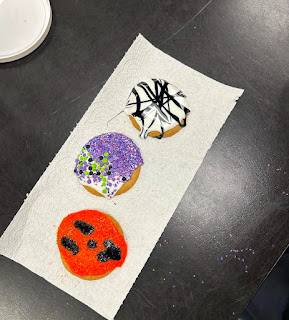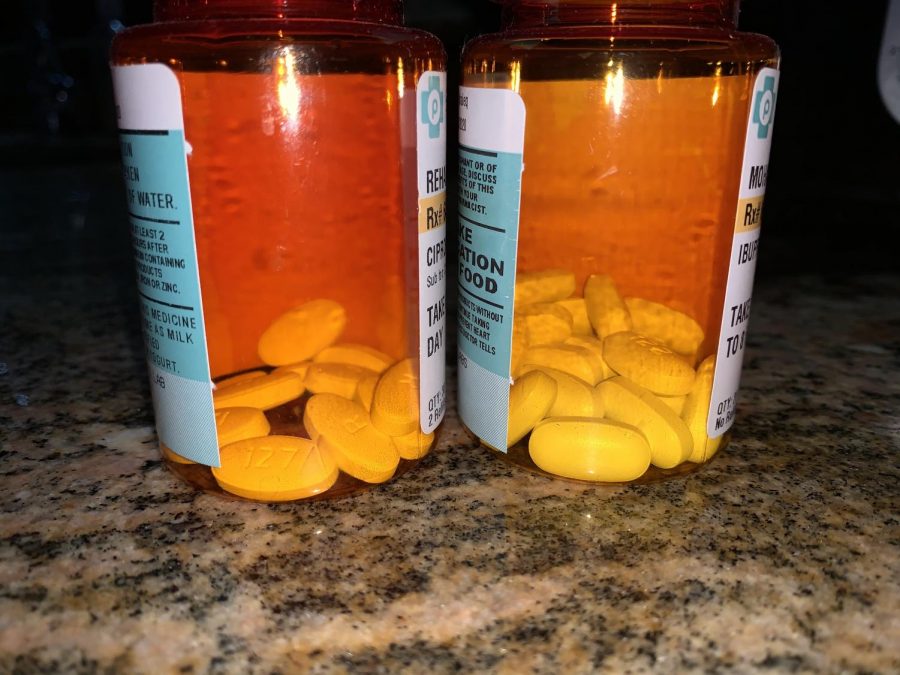OPIOID EPIDEMIC HARMS LIVES
Our generations opiod crisis grows more everyday, leaving an increasing damage to our society.
December 5, 2019
In today’s day and age, drugs have become a prevalent mainstream activity among many of America’s youth. From common culture drugs such as tobacco and alcohol to those with heavier consequences, drugs have stormed the United States with a booming impact. Whether it be ourselves or someone we know, understanding the repercussions of drug addiction is essential for facing and fixing the epidemic plaguing the American population. Opioids and their life-destroying effects have grasped society as a seemingly unsolvable problem but many have learned from watching or personally experiencing the repercussions.
Opioids are substances that bind to receptors in the body, producing morphine-like effects. They are medically used for pain relief after major trauma or illness and is also found in common anesthesia. Most opioids are made from the opium plant while others are synthetically produced. Synthetic opioids are commonly found in pills and illegally sold as fake painkillers, while ethical opioids are extracted from naturally-occurring chemicals in opium pods refined into medication. Some of the drugs that contain opioids are oxycodone, hydrocodone, fentanyl, and tramadol, which are prescription drugs that doctors regularly prescribe to everyday patients. Recently, doctors have been receiving backlash from patients and the medical board for prescribing opioids as a first line of pain defense. It seems as though the addictive nature of opioids is outweighing the benefits and reasons for prescribing it.
“I know a lot about addiction unfortunately, because I have a family member that has been a heroin addict,” said Calculus teacher Tami Ackerson.
Tami Ackerson is an AP Calculus Teacher at Seminole High School. With personal experience, Ackerson is able to attest to the effects and issues that opioids can cause on victims and their families.
From 2017 to 2018, there has been a 10% increase, about 72,000 people, of fatal drug overdose in the US. This staggering statistic is largely due to the opioid crisis. An opioid epidemic occurs when there is a sharp upturn in the misuse of opioids. There have been two evident waves of the opioid crisis: during the 1990s with natural opioids, and then in 2010 with synthetic opioids, specifically heroin.
“I think there’s an underlying cause of addiction that is not just the substance, it’s childhood trauma [and] a good pain reliever. The hospitals can use it but the problem is you’ve got corrupt people and doctors,” noted Ackerson.
The increase of overdose patients in emergency rooms has led to many questioning the healthcare system which allows doctors to prescribe opioids as a means of pain relief. A positive measure to reduce the influx of overdose have been taken. In a survey recording a change from July 2017 to July 2018, 98% of the hospitals are reducing their opioid pain reliever use by switching out the medication or reducing the amount of opioids being administered.
However, opioids are still rampaging their way through the U.S. Roughly 21% to 29% of the patients who are prescribed opioid based medication heavily abuse them. About 8% to 12% develop an opiod addiction disorder, and 4% to 6% transition to heroin after the initial run out of prescribed medication (National Institute on Drug Abuse).
“There was a doctor who was prescribing 80 of these opioids at a time to my family member [leading to his addiction]. I don’t necessarily blame the drug, but [encourage its regulation],” said Ackerson.
With the growing issue at hand, many efforts are being made to try and help solve the issue that is destroying the lives of hundreds of American citizens everyday. From hospitals, to governments, from victims, to the families who have lost their dear loved ones from the drug, opioids are slowly gaining more attention for the problems it is causing. With proactive solutions and hard work, this crisis may not exist for much longer.
























